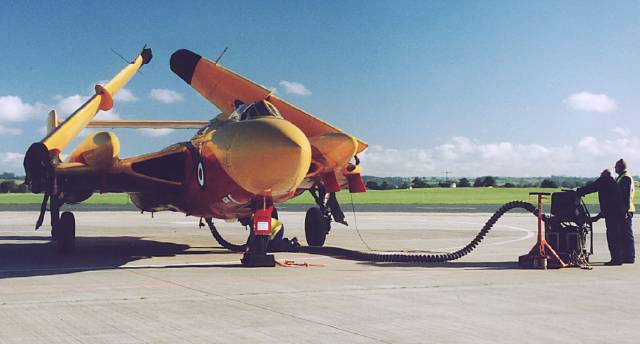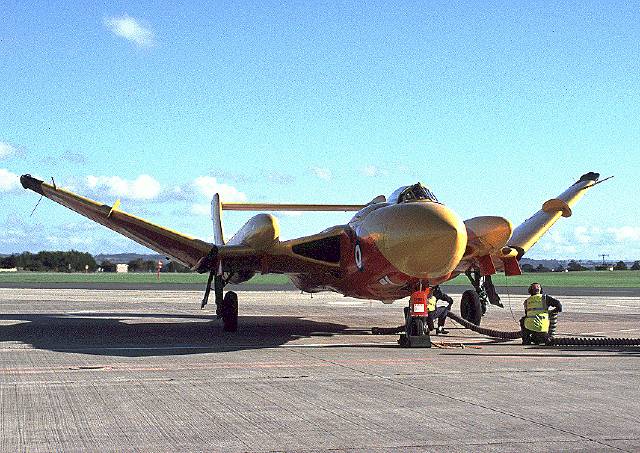|
|


 All images on this page © the author.
All images on this page © the author.
|
These pictures were taken at RNAS Yeovilton on September 29 2001 at a reunion open to all ex-Sea Vixen fliers, maintenance crews and partners. There were also some aviation enthusiasts in attendance.
|

Air start of starboard RR Avon 208 11,250 lb s.t. axial-flow turbojet engine
SRT101 with polarising filter on Fuji Superia, print scan
|
|
The port engine had been started first, as was the normal practice in RN service. Connection of Palouste required a low-bent run in ending with a turn and squat and the lift of the heavy bayonet coupling to mate with the aircraft connection. There was a certain amount of 'technique' involved. This operation, so close to the deck, could be a windy, smelly and noisy operation on a flight deck at sea with many other aircraft 'burning and turning'.
The air starter seen here is not typical of those used by RN squadrons. Ashore a large yellow painted box shaped Palouste on wheels was used by e.g. 766 Squadron. Front line squadrons 890, 892, 893 or 899 on board ship would use a Palouste fitted into an aerodynamic shaped pod. A pod which could be fitted to one of the fuel overload tank pylons fitted one to each outboard wing section, close to the wing-fold. Those inboard of the wing fold are weapons only pylons.
|

Engines burning and turning, mainplanes being spread
Dynax 7 and Sigma 50-500mm on Provia 400F at ISO 800, transparency scan at 710 dpi
|
|
This aircraft lacks the fuel overload tank pylons normally installed outboard of the wing-fold joint. The standard overload tank capacity was 200 Imperial gallons (150 Imperial gallons on early FAW1 e.g. some of Fred's Five formation). Two filler caps were fitted, one positioned to be atop tank in wing spread position, the other atop in wings folded position. If the ground crew forgot to replace the tank caps after over-winging (over-wing refuelling as opposed to a pressure refuel) a 'folded' aircraft then spectacular geysers of fuel were the result as the wings were spread. Something I witnessed a few times, fortunately from a safe distance.
|

|
Feel free to e-mail me with any comments and feedback. |
|


|

